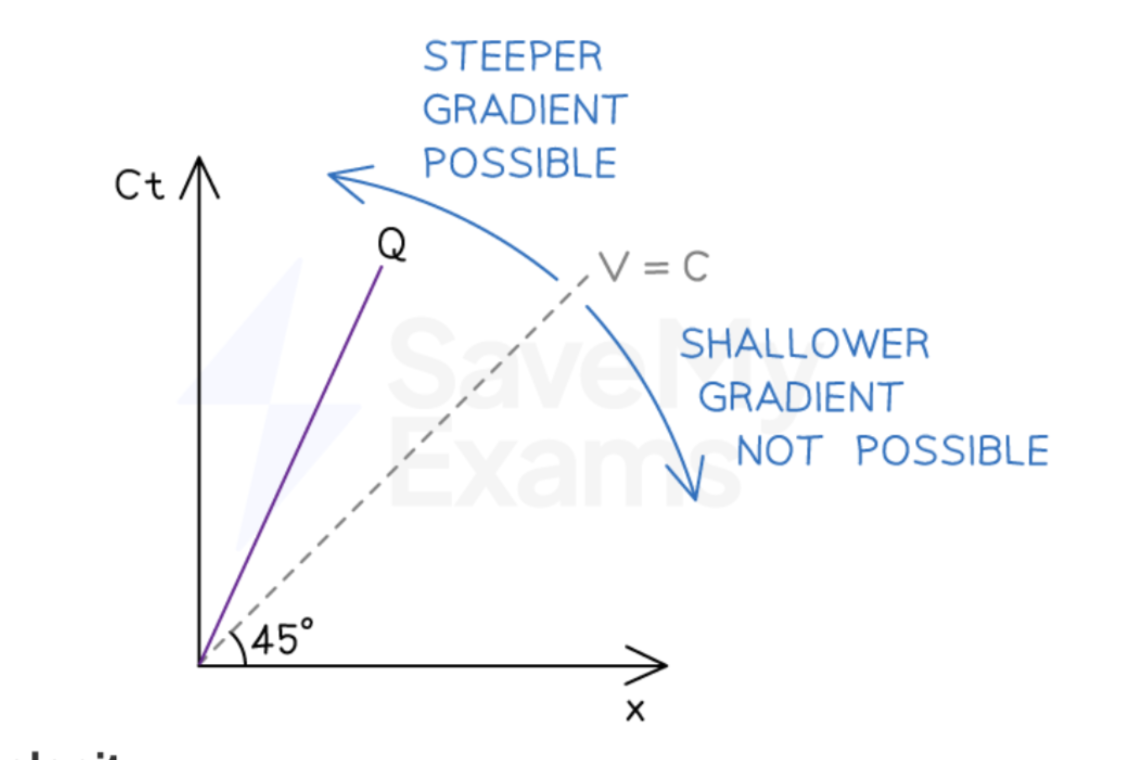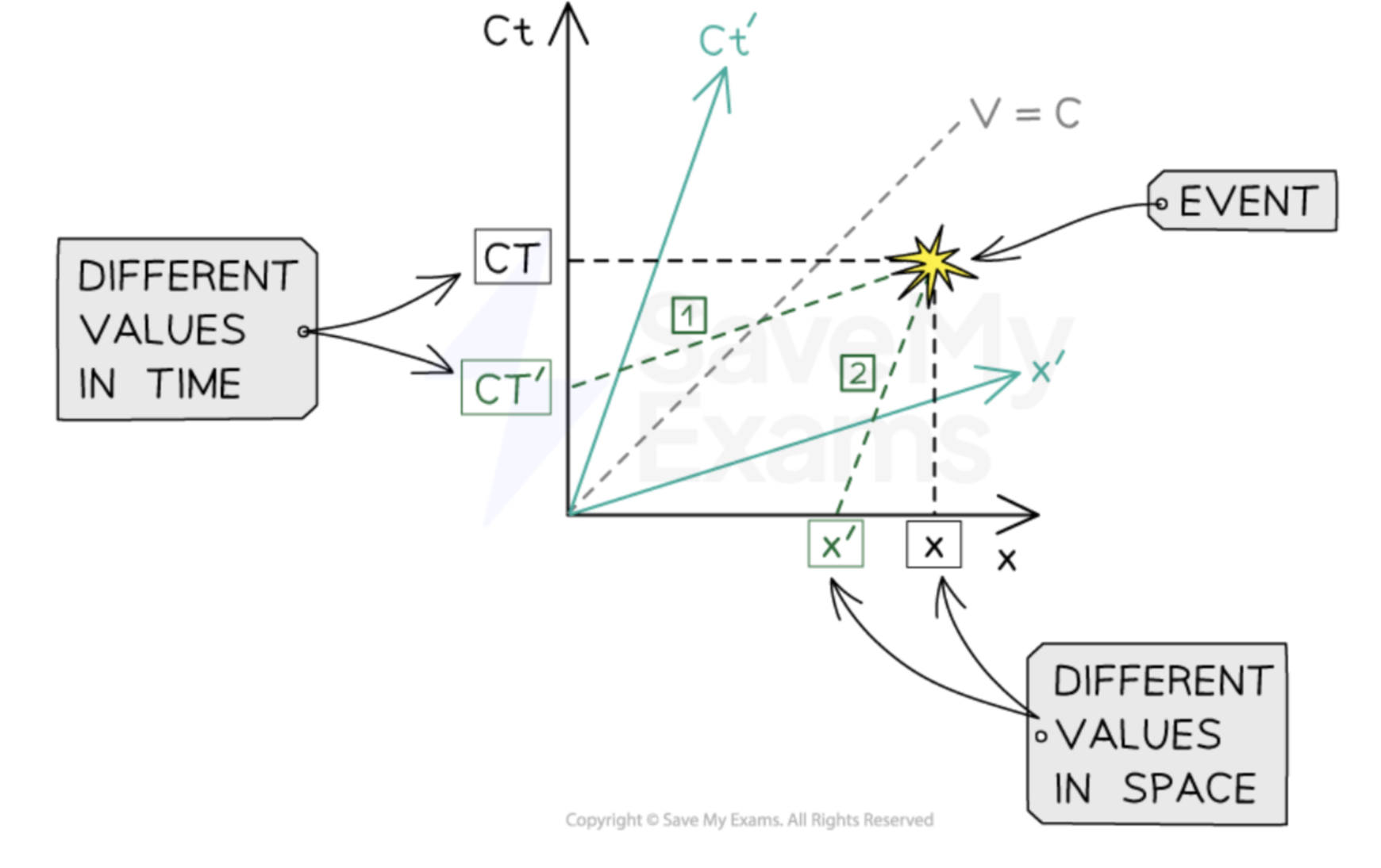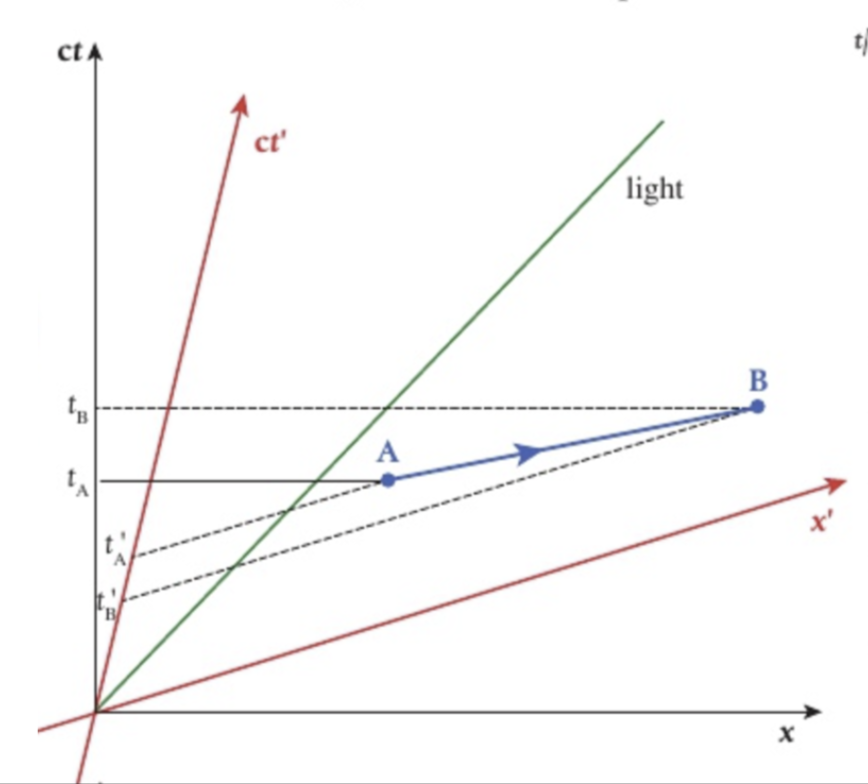A.5.2 Special relativity part 2 and 3xt
1/13
There's no tags or description
Looks like no tags are added yet.
Name | Mastery | Learn | Test | Matching | Spaced |
|---|
No study sessions yet.
14 Terms
four things that are no longer universal truths under special relativity
time, length, distance, simultaneity
things that are universal truths in special relativity
speed of light
space time interval
the distance in space-time that is the same in all reference frames, it is invariant
what does it mean that spacetime interval is an invariant quality
quantity that is the same in all reference frames
space-time graphs
ct versus distance,
distance to distance, the gradient = velocity
steeper gradient slower teh object
world line
on a space-time graph. something occurring representing the position of a body at different times
the steeper the gradient the slower it is moving
at speed of light gradient is 1, can not be lower
positive gradient, moving towards the right
a world line object at rest
it is not getting further away from us, object at rest

worldline for constant velocity
q is an object at a constant velocity, shallower gradient not possible, faster than the speed of light

different y and x-axis for different frames of reference
we have to tilt the y and x-axis so that the gradient is the new speed of light

how to proof that you can not go faster than the speed of light from the space-time diagram
the gradient is steeper from moving from planet A to B, so taking the line parallel towards the axes to CT to find the time to travel from A to B proves that the time for B is less than A. This prove s it is wrong since you are traveling from A to B not B to A

simultaneity
events that are simultaneous in one frame of reference are not simultaneous in another
how to read space time graph
to find the time of the event, line drawn parallel to x until it meets ct and ct’. same for both observers
to find the position measured in S, taking a parallel line to ct-axis until it meets x axis.
to find the position of S’, take the parallel line of ct’ down to x axis
how do magnetic and electromagnetic forces expereinced chnage with reference frames
form an outside reference plane a charged particle moving next to for example a current-carrying wire, experiences a magnetic field, however, forthe particle it doenst know its moving thsu not creating the magnetic force and experiences electrostatic force
how can we synchronize two clocks
by starting them at the same time and then moving apart or synchronize all of the clocks at a master clock and then slowly move every other clock into place on the spacetime lattice.